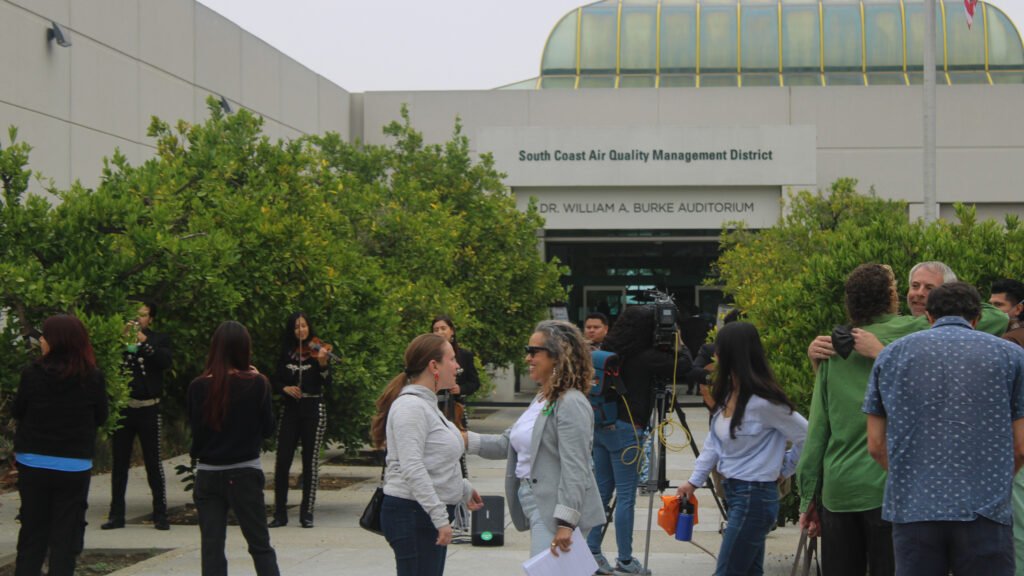SoCal’s Gas-Powered Water Heaters Won’t Get Phased Out, For Now
In the heart of Southern California, the air buzzes with tension as local residents watch their local leaders grapple with a perilous dilemma. In a recent vote that captivated the attention of over 250 attendees—spanning from environmental advocates to local officials—members of the South Coast Air Quality Management District (SCAQMD) voted 7-5 to delay proposals aimed at limiting the sale of gas-powered water heaters and furnaces. This critical decision reflects mounting pressures from constituents who fear soaring costs as they navigate a murky intersection of environmental mandates and economic realities.
The Weight of Change Amidst Cost Concerns
On an ordinary day, the air quality in Southern California serves as a reminder of the immense pollution challenges faced by its nearly 17 million residents. Yet, envisaging a future devoid of gas appliances conjures an unsettling image for many. According to SCAQMD estimates, transitioning to electric alternatives may impose burdens of up to $7,000 on families already reeling from high housing costs.
“We all support clean air, but the burdens must not fall solely on working-class citizens,” asserted Orange County Supervisor Janet Nguyen during the board meeting. “How can we prioritize environmental progress without punishing those we represent?”
In stark contrast, environmental advocates argue the health ramifications of maintaining gas appliances far outweigh the fiscal implications. Studies from institutions like the Environmental Defense Fund caution that nitrogen oxides emitted by these appliances are linked to respiratory issues and contribute to 2,500 premature deaths annually in the region. “This isn’t merely a financial choice; it’s about the health of our communities,” stated Nithya Raman, a Los Angeles city councilwoman who voiced support for the initial proposals.
The Legal and Political Landscape
- Environmental Advocates: Stress health benefits and pollution reduction.
- Local Officials: Cite economic burdens and potential repercussions for low-income families.
- Legal Threats: U.S. Attorney Bill Essayli has hinted at potential lawsuits if the regulations advance.
Despite environmental groups rallying in droves to support the initiative, citing research that highlights the malady of poor air quality, the political landscape remains fraught with challenges. They emphasize that the transition to electric appliances would mitigate ailments that now plague many families, especially children and the elderly. “We need to dismantle the notion that gas is helpful—it’s harming our community,” remarked Aura Vasquez, a member of the Building Electrification Coalition, as she emphasized the urgent need for change.
Pushing for Progress or Political Posturing?
The proposals were initially ambitious, envisioning a gradual phasing out of all gas-powered appliances by 2036. However, opposition from regional leaders compelled SCAQMD to pivot toward a more palatable approach—a gradual cap that would allow for 90% of water heaters sold to transition to electric power by 2036.
“We want to protect air quality without imposing excessive sacrifices on our residents,” commented Vanessa Delgado, an air quality board chair. With rebates promised for those making the transition, officials expressed a fragile optimism that a compromise might ease concerns while ultimately benefitting public health.
However, skepticism remains. City Councilman John Gabbard of Dana Point stated, “The trajectory toward cleaner air shouldn’t come at the expense of low-income families struggling with the high costs of living.” This sentiment resonates with many who fear that yet another regulatory burden will further complicate homeownership and housing affordability.
Impact on the Ground
- Projected Costs: Up to $19,000 for single-family homes to switch to zero-emission appliances.
- Health Concerns: Increased respiratory issues linked to pollution from existing gas systems.
- Public Reactions: Overwhelming attendance and vocal registration of opinions at SCAQMD meetings.
The debate captivates the public’s attention, not merely for its environmental implications, but for the social justice issues intertwined with low-income communities facing potential displacement amidst rising living costs (California Air Resources Board, 2024). As attendees exited the meeting, a mixture of frustration and resolve was palpable—signals of a community intent on safeguarding both their health and their homes.
While the proposal remains postponed for further revisions, the backdrop of Engelwood Avenue and bustling Southern California speaks volumes: the air may be stagnant, but the fight for clean policies is anything but. With every legislative pause, the pressing question persists: Who ultimately pays for cleaner air?





